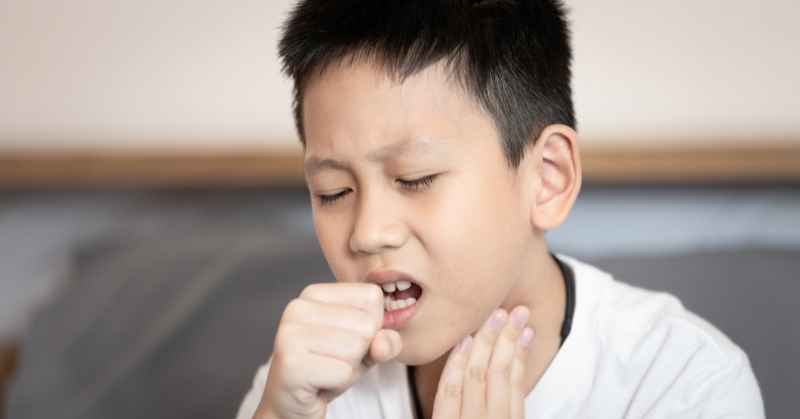Humidity levels play a significant role in the overall indoor air quality of a home. When moisture accumulates, it creates a breeding ground for mildew and mold, both of which can pose health risks, especially to children. Young children, whose immune and respiratory systems are still developing, are particularly vulnerable to airborne mold spores and the irritants they produce. Understanding the connection between humidity, mildew, and mold can help prevent serious respiratory complications in children and ensure a safer indoor environment.
The Link Between Humidity and Mold Growth
Excess humidity is one of the primary contributors to mold and mildew growth. When indoor humidity levels exceed 60%, moisture begins to accumulate on surfaces such as walls, ceilings, and furniture. In these conditions, mold spores, which are always present in the air, find an ideal environment to multiply. Areas prone to excessive moisture, such as basements, bathrooms, kitchens, and poorly ventilated rooms, are at higher risk of developing mold colonies.
Mildew, a surface-level form of mold, typically appears as white or gray patches on walls and ceilings. While it is easier to remove than mold, it is still an indicator of excessive humidity. Left unaddressed, mildew can lead to deeper mold infestations, causing more significant structural and health issues.
How Mold Affects Children’s Respiratory Health
Mold releases microscopic spores into the air, which can be inhaled and cause irritation in the respiratory system. Children, due to their smaller airways and developing immune defenses, are more susceptible to these effects. Exposure to mold can trigger or worsen conditions such as:
- Asthma – Mold spores can act as asthma triggers, leading to frequent attacks characterized by wheezing, shortness of breath, and chest tightness.
- Allergic Reactions – Many children are sensitive to mold, experiencing symptoms such as sneezing, runny nose, itchy eyes, and skin rashes.
- Chronic Coughing and Wheezing – Even in children without asthma, mold exposure can lead to persistent respiratory symptoms that may be mistaken for common colds.
- Sinus Infections – Mold can irritate the nasal passages and lead to chronic sinus congestion and infections.
Children with pre-existing respiratory conditions are at an even higher risk, as mold exposure can exacerbate their symptoms and lead to frequent medical visits.
Why Humidity Control Is Essential
Regulating indoor humidity is one of the most effective ways to prevent mold growth. Proper ventilation, dehumidifiers, and air conditioning can help maintain humidity levels between 30-50%, reducing the likelihood of moisture accumulation. Regular inspections for leaks in plumbing, roofs, and walls can also prevent hidden mold growth behind walls and under flooring.
Additionally, improving airflow in high-moisture areas, such as bathrooms and kitchens, can significantly decrease the chances of mildew and mold formation. Simple actions, such as using exhaust fans, opening windows, and wiping down damp surfaces, can go a long way in controlling humidity.
Addressing Mold Contamination
If mold is already present in the home, immediate action is required. Small patches of surface mold can sometimes be removed using household cleaning solutions, but larger infestations require professional intervention. Attempting to remove extensive mold growth without proper protective equipment can lead to the release of harmful spores into the air, further aggravating respiratory issues.
For homeowners dealing with significant mold contamination, professional restoration services are the safest and most effective option. Schedule Flood Cleanup Services with Water Damage Pros Raleigh to ensure thorough mold remediation and moisture control. Their expertise in flood restoration, water damage repair, and mold remediation helps create a healthier environment for families by addressing moisture problems at their source.
The Importance of Professional Mold Remediation
Mold removal is not just about cleaning visible patches; it requires identifying and eliminating the root cause of the moisture problem. Professional mold remediation services use advanced techniques such as air filtration, moisture detection, and antimicrobial treatments to ensure complete eradication. Additionally, they assess indoor air quality and provide recommendations for long-term moisture prevention.
Ignoring mold growth can lead to long-term damage not only to a home’s structure but also to the health of its occupants. Mold spores can travel through air ducts, spreading contamination throughout the house, making professional intervention crucial in severe cases.
Ensuring a Safe Indoor Environment for Children
The best way to protect children from mold-related respiratory issues is through proactive prevention. Keeping humidity levels in check, addressing leaks immediately, and ensuring proper ventilation are essential steps in maintaining good indoor air quality. Parents should also be vigilant about monitoring signs of mold growth, such as musty odors, discolored walls, and increased respiratory symptoms in children.
When dealing with water damage or mold infestations, professional cleanup services offer the most effective solution to restore a home’s safety. Taking action early can prevent costly repairs and long-term health risks for children and other vulnerable family members.











